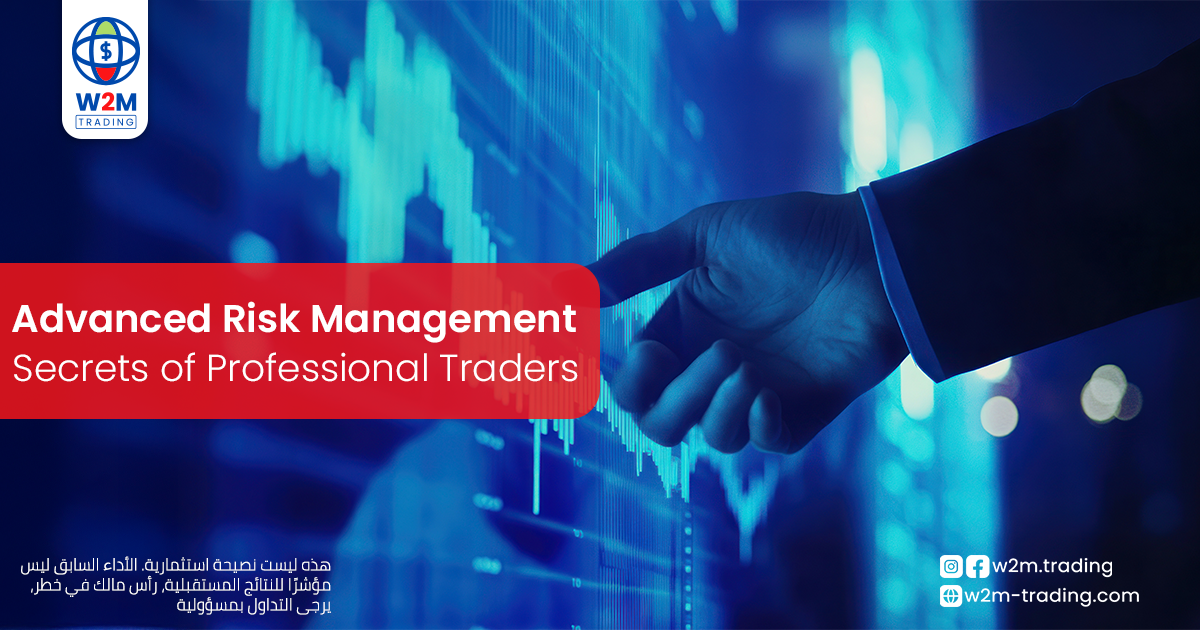- Attractive Education
- Beginner to Advance
- Flexible Timing

In financial trading, excellence isn’t just earning profits — it’s preserving capital. While beginners focus on entry rules, professionals know that risk management is the backbone of sustainable success. This article reveals advanced methods used by major institutions and how to integrate them into your trading system.
Why advanced risk management differs
Professional risk management is deeper than setting stop-losses. It’s an integrated system to understand and protect a portfolio from potential shocks, including: liquidity analysis, scenario forecasting, institutional hedging, and real-time monitoring tools.
Liquidity analysis reveals what’s really happening in the market, letting you anticipate moves rather than follow them.
Liquidity mapping
Techniques used by large banks to identify true supply/demand levels and distinguish retail vs. institutional orders. Helps locate reversal points and liquidity bottlenecks that can cause severe slippage.
Market impact models
Mathematical models that measure how trade size affects price and market response. They estimate real execution costs and improve entry/exit planning for large orders.
Professional hedging builds a layered safety net across many risk types.
Non-linear hedges
Barrier options — derivative contracts that protect only if price crosses a barrier.
Dynamic straddle/staddle positions — option mixes adjusted continuously to guard against extreme moves.
Volatility-targeting funds — automatically reduce position sizes when volatility spikes and increase when it falls.
Cross-asset hedging
Using uncorrelated assets (e.g., commodities like gold) to hedge currency or inflation risks, providing flexibility when correlations break down in crises.
Professionals use systems that detect risk signals before they escalate.
Early warning systems
Automated monitors that flag abnormal trading patterns — sudden liquidity shifts or large capital flows — enabling preemptive action.
Holistic dashboards
Centralized views of portfolio risk: exposure by asset, concentration metrics, and diversification status — ensuring continuous control over every part of the strategy.
Beyond simple backtests, professionals simulate extreme and varied scenarios.
Adjusted historical stress tests
Recreate past crises (e.g., 2008) adjusted to current market conditions to reveal strategy vulnerabilities.
Advanced probabilistic simulations
Generate thousands of alternative market scenarios to identify critical turning points and measure strategy robustness against rare events.
Professionals vary position sizes based on market conditions, not fixed rules.
Dynamic allocation
Automatically adjust position sizes according to volatility, risk/return metrics, or other signals to avoid excessive exposure during turbulence and scale up in favorable conditions.
Optimal distribution models
Mathematical frameworks for allocating capital across assets to maximize the risk/return balance, manage cash flow complexity, and preserve liquidity when needed.
Advanced risk management is continuous, not a one-off. It requires:
Continuous monitoring (24/5) of market drivers.
Deep analysis beyond surface data to find root-cause risks.
Multi-layered protection via overlapping hedges.
Rapid adaptation — updating strategies daily as new information arrives.
W2M tip: Start implementing these principles step-by-step. Weekly review liquidity moves for your traded assets and log observations in a simple sheet. Remember: a successful trader controls risk first — profit follows.
This site is protected by reCAPTCHA and the Google
Privacy Policy and
Terms of Service apply.